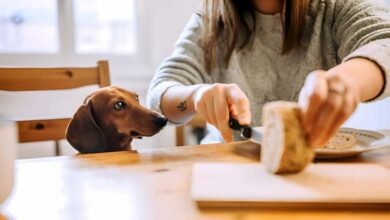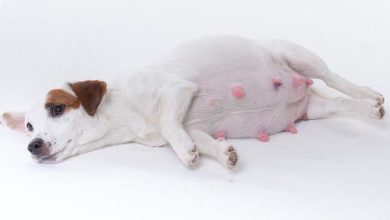
As any pet owner knows, accidents are inevitable—especially when it comes to house-training puppies or managing older dogs. One of the most common and frustrating problems is dealing with dog urine stains. Not only are these stains unsightly, but they can also leave behind unpleasant odors that linger long after the stain appears to be gone. Whether you’re dealing with a fresh accident or an older stain, knowing how to clean dog urine stains effectively is essential for maintaining a clean, fresh home.
In this article, we’ll explore the best methods and solutions to remove dog urine stains, neutralize odors, and ensure your home stays spotless. We’ll cover DIY solutions, commercial products, and tips for cleaning various surfaces, from carpets to hardwood floors.
1. Act Fast – Why Timing Matters
The key to successfully cleaning dog urine stains is acting quickly. The longer the urine sits, the deeper it can penetrate into your carpets, furniture, or flooring, making it much harder to remove. Fresh stains are much easier to clean than old ones, so if you catch the accident in time, you can usually prevent the stain from setting in.
As soon as you spot a urine stain, blot the area with a clean, absorbent cloth or paper towels to soak up as much liquid as possible. Avoid rubbing or scrubbing, as this can push the urine deeper into the fibers. Once you’ve blotted up the excess liquid, you can move on to applying your cleaning solution.
2. Use the Right Cleaning Solution for Dog Urine Stains
To effectively clean dog urine stains, you need a solution that not only lifts the stain but also neutralizes the odor. Dog urine contains uric acid, which can be tough to break down, so regular household cleaners often aren’t enough. Fortunately, there are several DIY and commercial cleaning options that can help you tackle pet stains and odors.
DIY Cleaning Solutions for Dog Urine Stains:
- Vinegar and Water Solution: One of the most effective and natural solutions for cleaning dog urine stains is a simple mixture of white vinegar and water. Combine equal parts vinegar and water and apply the solution to the stained area. Let it sit for 5-10 minutes, then blot the area with a clean cloth. Vinegar helps break down the uric acid in the urine and neutralizes odors. Once the stain is gone, you can sprinkle some baking soda on the area to further absorb any lingering odors, leaving the surface fresh.
- Baking Soda Paste: For older stains, make a paste by mixing baking soda with water and apply it directly to the stain. Let it sit for at least 30 minutes before scrubbing with a brush. The baking soda will absorb the odor and lift the stain from the surface. Afterward, vacuum up the dried paste.
- Dish Soap and Hydrogen Peroxide Solution: Another effective DIY solution involves a tablespoon of dish soap mixed with two cups of warm water and a tablespoon of hydrogen peroxide. This mixture can help break down both the stain and the odor, making it especially effective for older, set-in stains. Apply the solution to the stain, allow it to sit for 10-15 minutes, then blot and rinse.
Commercial Pet Stain Removers:
If DIY solutions aren’t enough, you can turn to commercial enzymatic cleaners, which are designed specifically to tackle pet stains. These cleaners contain natural enzymes that break down the proteins in urine, making them highly effective for removing both stains and odors. When choosing a commercial cleaner, look for one that is safe for the surfaces you are cleaning, whether it’s carpet, hardwood, or upholstery.
To use a commercial enzymatic cleaner, simply apply the product to the stained area according to the manufacturer’s instructions. Let it sit for the recommended amount of time (usually around 10-15 minutes), then blot the area and allow it to air dry.
3. Clean Different Surfaces Effectively
Dog urine can leave stains on a variety of surfaces in your home, from carpets and rugs to hardwood floors and furniture. Here’s how to clean dog urine stains on each:
Carpets:
Carpets are the most common place for pet stains to occur, and they can be tricky to clean due to the absorbent nature of the fibers. After blotting up as much liquid as possible, apply your cleaning solution. For fresh stains, vinegar and water work well, while older stains may require a more powerful cleaner or a hydrogen peroxide solution. After cleaning, rinse the area with water and blot again to remove excess moisture. You can also use a steam cleaner to deep clean your carpet and remove any lingering pet stains or odors.
Hardwood Floors:
When dog urine gets on hardwood floors, it can seep into the wood and cause damage over time. The key is to clean it up as quickly as possible. Start by blotting up the liquid with a dry cloth. Then, mix a solution of one part vinegar to three parts water and gently clean the affected area with a soft cloth. Avoid using too much liquid, as moisture can warp the wood. Dry the area thoroughly after cleaning to prevent water from seeping into the wood and causing further damage.
Upholstery:
For upholstered furniture, it’s essential to use minimal liquid to avoid soaking the fabric. If the fabric is washable, you can apply a vinegar-water solution directly to the stain. For more delicate fabrics, test a small, inconspicuous area first. Blot the stain gently and avoid rubbing. After cleaning, allow the upholstery to air dry. For older or persistent stains, you may need to use a professional cleaning service to fully remove the stain and odor.
4. Prevent Future Pet Stains
While cleaning dog urine stains is essential, preventing future accidents is even better. Here are a few tips to help reduce the likelihood of future stains:
- Proper Training: If your dog is still a puppy, consistent house training can significantly reduce accidents indoors. Positive reinforcement and regular bathroom breaks can help reinforce good habits.
- Health Check: Sometimes, frequent accidents can be a sign of a health issue, such as a urinary tract infection or incontinence. If your dog suddenly begins urinating indoors more frequently, it’s a good idea to visit the vet to rule out any medical concerns.
- Protective Covers: Consider using washable covers or waterproof mats in areas where your dog spends the most time. These can help protect your carpets and furniture from future accidents.
5. Neutralize Odors
Even after cleaning, odors can sometimes linger. To neutralize them, try sprinkling baking soda on the affected area and letting it sit for a few hours (or overnight). Baking soda absorbs odors and leaves your home smelling fresh. Alternatively, you can use activated charcoal or air purifiers designed to remove pet odors.
Conclusion
Cleaning dog urine stains doesn’t have to be a stressful or complicated task. By acting quickly, using the right cleaning solutions, and targeting the right surfaces, you can effectively remove dog urine stains and neutralize any lingering odors. Whether you opt for DIY solutions or commercial products, the key to successful pet stain removal is persistence and the right techniques. With these expert tips, you can maintain a fresh, clean home while enjoying the company of your furry friends.




